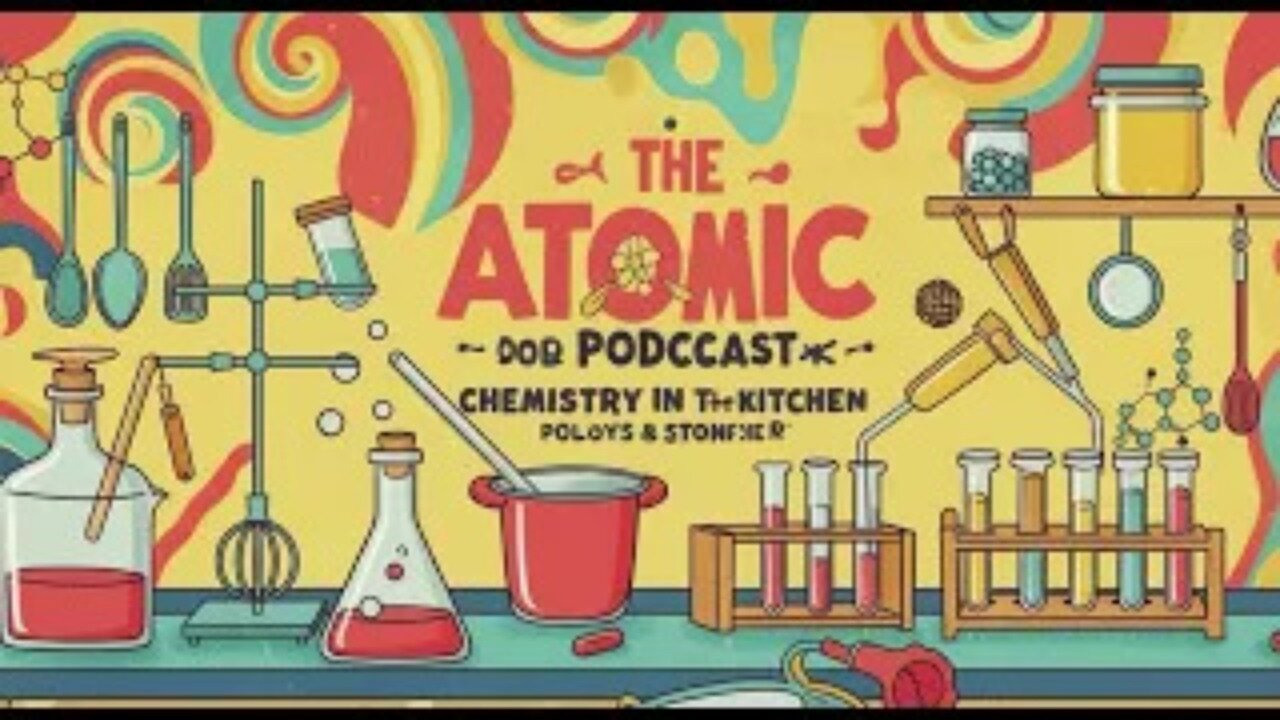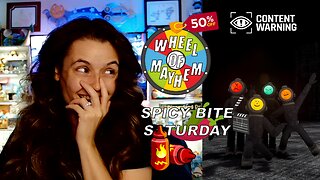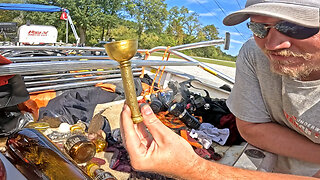Premium Only Content

The Chemistry of Food Podcast | The Maillard Reaction: Browning & Flavor Secrets
Ever wondered why your toast gets perfectly golden, or why a seared steak tastes so incredible? In this episode of The Chemistry of Food Podcast, we dive deep into The Maillard Reaction, the fascinating chemical process responsible for the delicious browning and complex flavors in so many of our favorite foods! Learn the science behind caramelization, savory notes, and the art of cooking.
In this episode, we'll explore:
* What is the Maillard Reaction and how does it work?
* The key ingredients and conditions for optimal browning.
* How the Maillard Reaction differs from caramelization.
* Examples in everyday cooking: roasted vegetables, seared meats, baked goods, and more!
* Tips for maximizing flavor through the Maillard Reaction in your kitchen.
This video explores the fascinating and often invisible world of food chemistry, revealing how fundamental chemical principles shape the foods we eat every day. It begins with water, the most abundant molecule in food, explaining its unique molecular structure that causes ice to float and its critical role as a plasticizer and influencer of physical food properties. The video dives into hydrophobic interactions, emphasizing how water—not fats—drives the clumping of oils by seeking to maximize its own entropy. It clarifies why simply knowing water content isn’t enough to predict food spoilage, highlighting the importance of water activity and chemical kinetics.
The discussion moves on to proteins and enzymes, illustrating their roles as molecular architects and catalysts in food texture, stability, and flavor development. It details the importance of pH and metal ions in enzyme function, uses enzymatic browning in apples as a practical example, and explains how enzyme activity affects baking and cheese production.
Next, the video covers the transformations proteins undergo during heating, including post-translational modifications and the use of chemical markers like furosine to monitor heat damage. It then shifts to lipids and carbohydrates, discussing lipid oxidation’s dual role in flavor and rancidity, the protective role of antioxidants and synergists, the health concerns of trans fats formed during partial hydrogenation, and the role of carbohydrates like inulin and polydextrose as functional fibers with zero glycemic index.
CHAPTERS
00:07
Introduction to food chemistry
01:05
Water's unique role in food
02:28
Hydrophobic interactions explained
04:17
Proteins and enzymes in food
07:34
Enzyme activity and inhibition
08:56
Enzymatic browning and prevention
09:54
Enzymes in baking and heat effects
11:21
Lipid oxidation and antioxidants
13:18
Partial hydrogenation and trans fats
14:14
Carbohydrates and dietary fibers
15:37
Gelation properties of seaweed
17:02
Bioavailability of minerals
18:26
Vitamin loss in processing
19:20
Umami and MSG taste
20:47
Wine aroma compounds
22:14
PCBs and food safety
23:08
Summary of food chemistry insights
The unique gelling properties of polysaccharides such as agar and carrageenan are explored, including their ion-dependent gelation and thermal hysteresis, which impacts food texture and stability. The video also stresses the importance of bioavailability, especially for minerals like iron, and how dietary choices and vitamin C intake can dramatically affect nutrient absorption. It addresses nutrient loss during food processing and the impact of light on vitamin degradation.
Flavor enhancement is illustrated through MSG and the umami taste, explaining its historical discovery and biological basis. Wine aroma chemistry is discussed, including cultivar-specific odorants and the formation of undesirable kerosene notes due to aging and storage conditions. Finally, the video highlights the significance of understanding food contaminants like PCBs, their environmental persistence, bioaccumulation, and the resulting regulatory measures ensuring food safety.
Overall, the video reveals how water, proteins, enzymes, lipids, carbohydrates, and trace compounds orchestrate the complex chemical choreography behind food’s texture, flavor, nutrition, and safety—transforming everyday meals into remarkable chemical phenomena.
Highlights
💧 Water’s unique molecular structure causes ice to float and shapes food texture.
🔬 Hydrophobic interactions are driven by water maximizing its entropy, not fats attracting each other.
🍳 Proteins and enzymes are molecular architects and catalysts crucial for food texture and flavor.
🌡️ Heat-induced protein modifications can reduce nutritional value and be tracked chemically.
🥑 Lipid oxidation produces both desirable and undesirable flavors; antioxidants protect fats.
🍞 Functional fibers like inulin and polydextrose aid gut health without raising blood sugar.
🍷 Wine aroma complexity and aging can lead to both prized and unwanted scent changes.
-
 LIVE
LIVE
RiftTV
4 hours agoTHIS is Why FATIGUE is At An ALL TIME HIGH.. | SLIGHTLY OFFENSIVE
10,172 watching -
 LIVE
LIVE
MattMorseTV
1 hour ago $16.01 earned🔴Portland Antifa's LASER ATTACK.🔴
4,610 watching -
 LIVE
LIVE
megimu32
45 minutes agoOFF THE SUBJECT: SAVAGE SATURDAY | Bodycam Chaos & Fortnite Madness!
243 watching -
 LIVE
LIVE
Mally_Mouse
21 hours ago🌶️ 🥵Spicy BITE Saturday!! 🥵🌶️- Let's Play: Content Warning
360 watching -
 3:11
3:11
Memology 101
16 hours ago $0.42 earnedDon Lemon DESTROYED by LEGAL immigrants after claiming crossing the border illegally ISN'T a crime
93118 -
 1:32:31
1:32:31
BooniesHQ
6 hours ago $13.06 earnedGame Of SKATE Jereme Rogers Vs. Jordan Maxham: Boonies Skate Night 3
110K13 -
 15:23
15:23
Exploring With Nug
12 hours ago $2.60 earnedWe Went Scuba Diving in the River and Found Incredible Lost Relics!
10.3K2 -
 DVR
DVR
Rallied
7 hours ago $11.99 earnedBATTLEFIELD 6 DOMINATION WITH RAL !BF6 #BF6 #Ad
98.9K6 -
 24:23
24:23
MYLUNCHBREAK CHANNEL PAGE
22 hours agoIstanbul Should NOT Exist - Pt 5 of 5
27.9K18 -
 15:31
15:31
Chris Harden
2 days ago $1.88 earnedOvershadowed by Gary | Lake Station, Indiana
16K3